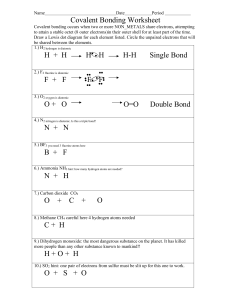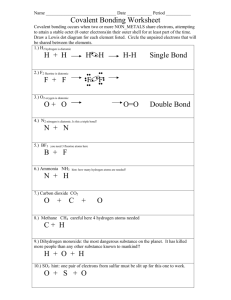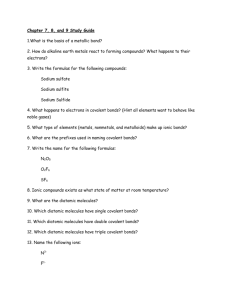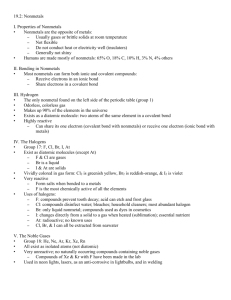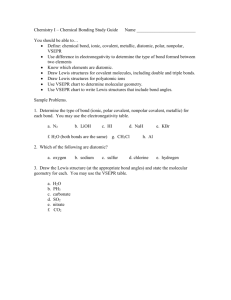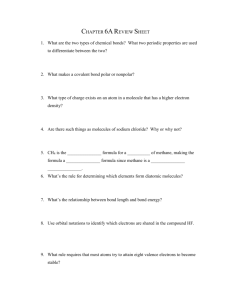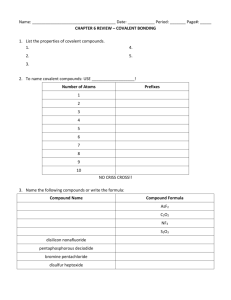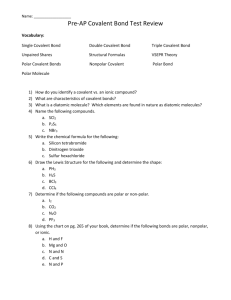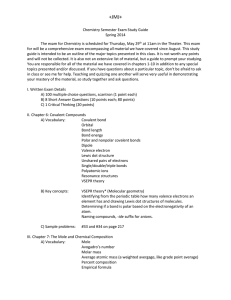Notes- Covalent Bonding
advertisement
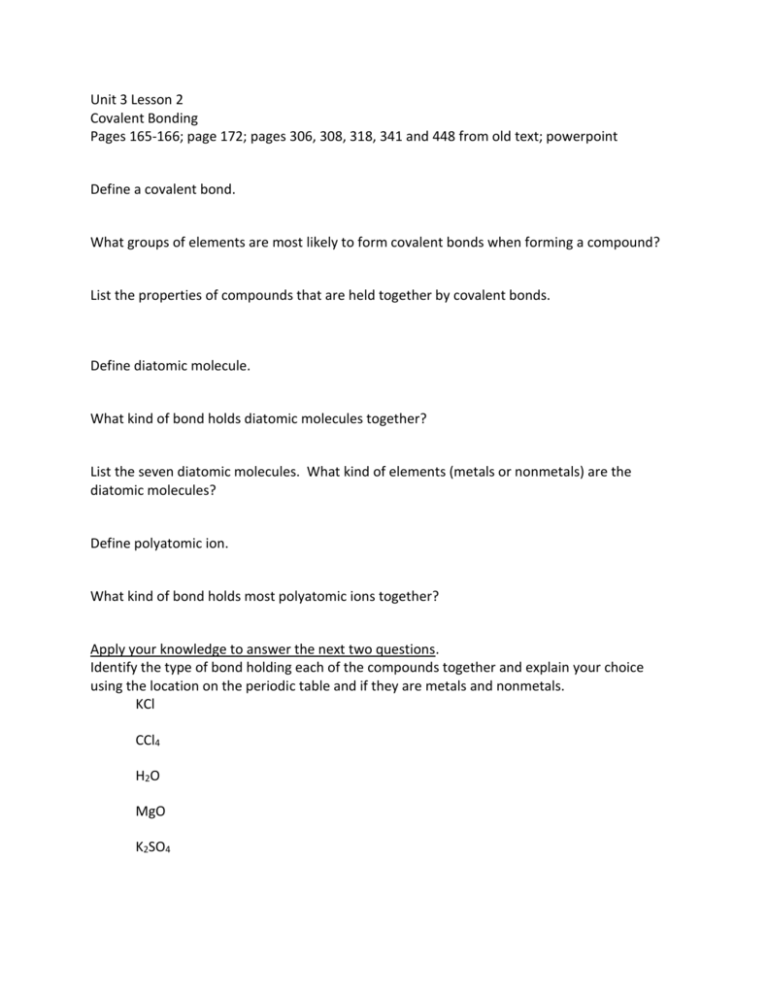
Unit 3 Lesson 2 Covalent Bonding Pages 165-166; page 172; pages 306, 308, 318, 341 and 448 from old text; powerpoint Define a covalent bond. What groups of elements are most likely to form covalent bonds when forming a compound? List the properties of compounds that are held together by covalent bonds. Define diatomic molecule. What kind of bond holds diatomic molecules together? List the seven diatomic molecules. What kind of elements (metals or nonmetals) are the diatomic molecules? Define polyatomic ion. What kind of bond holds most polyatomic ions together? Apply your knowledge to answer the next two questions. Identify the type of bond holding each of the compounds together and explain your choice using the location on the periodic table and if they are metals and nonmetals. KCl CCl4 H2O MgO K2SO4 From the following list of symbols, choose 2 elements that are likely to form a compound held together by an ionic bond. Explain your choices. Then select 2 elements that would likely form a compound held together by a covalent bond. Again, explain your choice. H, K, C, O, Mg, Cl
